We remove the power steering pump to replace it or when dismantling the engine.
Pear pump out the fluid from the power steering reservoir
Remove the accessory drive belt (article - Checking and replacing the Renault Duster accessory drive belt).
Removing the front bumper (article - Removing and installing Renault Duster bumpers)
Remove the radiator fan cover and move the radiator with the air conditioner condenser on the hoses forward.
We substitute a container for collecting liquid under the power steering pump and close the generator with polyethylene.
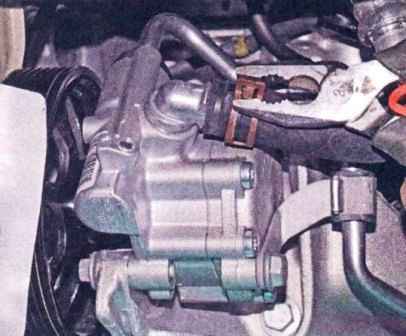
Squeezing the hose clamp of the filling line with pliers, slide the clamp along the hose and remove the hose from the pump nozzle.
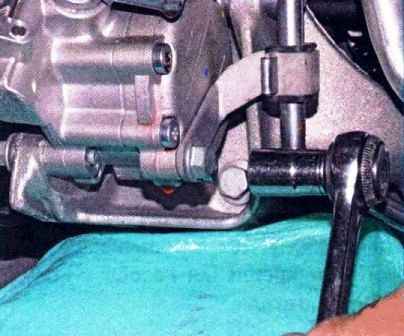
With a head of 13, we unscrew the bolt that secures the bracket of the discharge pipe to the engine bracket.

Using a 17 key, we unscrew the fitting of the discharge pipe.
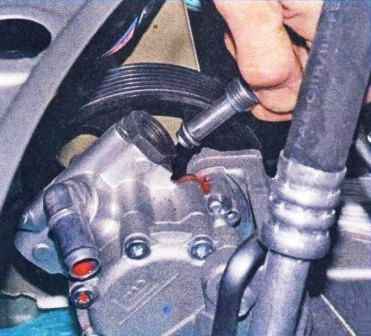
Remove the tip of the tube from the hole in the pump housing.
We insert plugs of a suitable diameter into the holes of the tube, hose and pump housing.
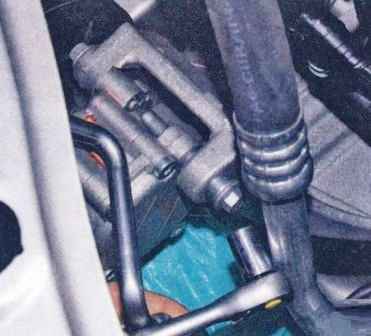
With a head of 10, we unscrew the upper bolt securing the pump to the engine bracket.
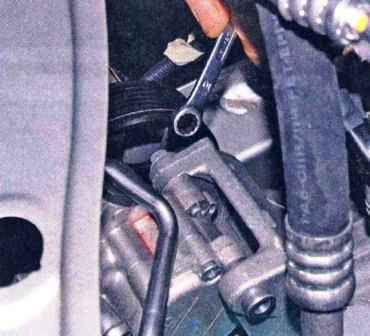
Using a 10 key, we unscrew the bolt of the upper pump mount, located on the opposite side of the bracket.
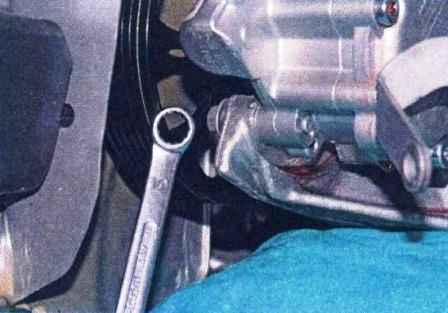
With the same tool, unscrew the lower bolt securing the pump to the engine bracket

Remove the pump.
Install the power steering pump in reverse order.
Install the accessory drive belt.
Pour working fluid into the reservoir of the power steering and remove air from the system.
Bleeding the power steering system
Bleeding the power steering system is necessary to remove air that has entered the hydraulic drive during the repair or replacement of individual components of the system.
Air trapped in the hydraulic drive causes a decrease in the effectiveness of the power steering.
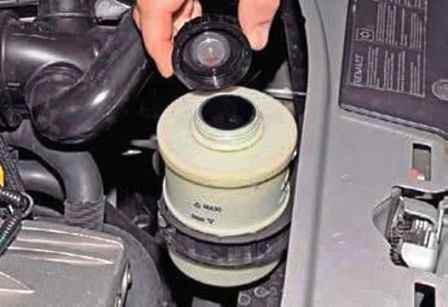
To bleed the hydraulic system on an idle cold engine, open the lid of the power steering reservoir and add fluid to the reservoir to the MIN mark.
We start the engine and at idle we check the fluid level in the tank.
When the liquid level drops, add it to the MIN mark.
Several times we turn the steering wheel left and right until it stops, following the At the same time, so that the liquid level in the tank is near the MIN mark and, if necessary, add liquid.
We return the steered wheels to the position of the rectilinear movement of the car and let the engine run for another two or three minutes.
Then again turn the steering wheel left and right until it stops and, if necessary, add liquid to the tank to the MIN mark.
Stop the engine and check the fluid level in the tank again.
After warming up and stabilizing the temperature of the working fluid, its level should be at the MAX mark, and in a cold state it should not fall below the MIN mark.
Normal operation of the hydraulic booster should not be accompanied by increased noise, and no air bubbles should be visible in the liquid.
The effort on the steering wheel with the engine running should be significantly less than when the engine is not running.
The noise of the power steering when the front wheels are turned to the limit is not a malfunction.
Close the cover of the power steering reservoir.





